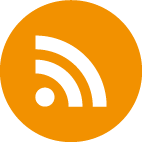“Now where did I leave my jolly pith helmet?”
I commend this book for initiating a shift of paradigm in research concerning the Yao of southern China and the Southeast Asian highlands .The author speculates on the “racialisation of Thailand’s ethnic landscape” since the beginning of the 20th Century. He introduces that insight by reference to the “proto-ethnographers” of the The Siam Society’ (1920-64) whose headquarters in Bangkok once provided access to the “ most English of gentleman’s facilities” in the royal capital and to a cloak room large enough “to shelve every pith helmet worn to an entire AGM quorum” (pers. com 12/4/68 from Mr Donald Gibson, British Consul, Chiangmai). Jonsson further develops his case as a critique of the later field research conducted among the Kingdom’s mountain minorities by Western anthropologists affiliated with the government’s Tribal Research Centre (Institute) TRC(I) ( 1965-1989) . Investigation into the operations of the TRC’s still extant successor, The Tribal Museum (1997- ) extends that theme.
The book argues persuasively that the Thai Kingdom has harnessed expatriate expertise to promote public conceptualisation of uplanders as the “un-Thai” and to legitimate processes whereby such highland populations have become subject to draconian state controls including military eviction from the jungle terrain of Phrachangnoi where Yao used to hunt, harvest opium poppy and cultivate grain swiddens by techniques of shifting cultivation.
For example, the Royal Thai Airforce forced Yao out of the mountainous Phrachangnoi Subdistrict and into the lowlands by bombing their forests, farms and villages . These attacks began in 1968 and were followed immediately by deployments of the Royal Thai Army ( 3rd Region) which seeded the habitat of the evacuees with landmines that prevented the return of all but the most foolhardy throughout the subsequent forty years.
Several of Jonsson’s older informants were fugitives from the horrors of this violence . About 250 of them made it from the village of Pulangka to the fringes of Chiengkam, the closest Thai town. The camp of miserable bush shelters they originally established there has now developed into an outersuburb of 24 imposing longhouses each owned by a Yao kin unit (peo) whose memebers to-day total about 800. Such observations are basic to the book’s enquiry into the opposition by urban Yao to recent state legislation (1996) which purportedly enforces conservation of high altitude forests and protection of endangered fauna. The book illuminates the desperation with which a marginalised minority has resorted to arson to destroy the headquarters of a newly created wild life sanctuary which a government decree has recently established within that territory. But there are flaws in the scholarship of both the reading and the fieldwork from which the author has generated these provocative perspectives .
In this paper I do more anthropologically than simply review Jonsson’s book and that is because New Mandala has provided me with the rare opportunity to detail two of the major discourses in the experience on which I draw in responding to the volume. First, what I write is as much about the nitty-gritty of the anthropological fieldwork which I myself have conducted among Yao in Thailand during the last 40 years as it is an assessment of a monograph by an anthropologist reporting on his research while living more recently with these these people. I will appreciate any response from professional colleagues and other readers especially to two of the propositions through which I take issue with Jonsson:
- That the Yao are most approporiately conceptualisaed as subjects of their own theocratic state which transcends national boundaries rather than as one of the stateless tribal minorities with which national and academic authorities have typically classified these people; and
- That far from disintegrating through suburbanisation and removal from the rural context in which they had developed, their bilaterally extended families (peo) have thrived and become infrastructurally crucial both to the prosperity they have regained and to the retention of their ethnic group’s overall cohesion.
I also present myself to the reader as someone whose experience happens to enable him to assess the significance of Jonsson’s work in relation to the various and changing intellectual prioirities whose hegemony over more than 25 years has collectively determined what Yao Studies have tended to be. It is in regard to this multidisciplinary enterprise that I propose the concept of “bibliophilia” to explain how a dominant discourse of religious philology has marginalised anthropology in scholarship about the Yao for nearly three decades. Hence, I applaud the volume for clearing a pioneering path into a new paradigm of research about this minority in Thailand.
 Facebook
Facebook  Twitter
Twitter  Soundcloud
Soundcloud  Youtube
Youtube  Rss
Rss 